In the western massif of the Picos de Europa National Park, they receive daily the lakes of Covadonga to hundreds of visitors. This natural enclave of great beauty owes its name to the glacial lakes Enol and Ercina, to which a third –Bricial– is added during the thaw.
Since it is celebrated there on a recurring basis the end of the stage of the cycling Tour of Spain (on 22 occasions since 1983) have acquired international fame, which is why today your access is restricted as a way to limit the massive influx of tourists.
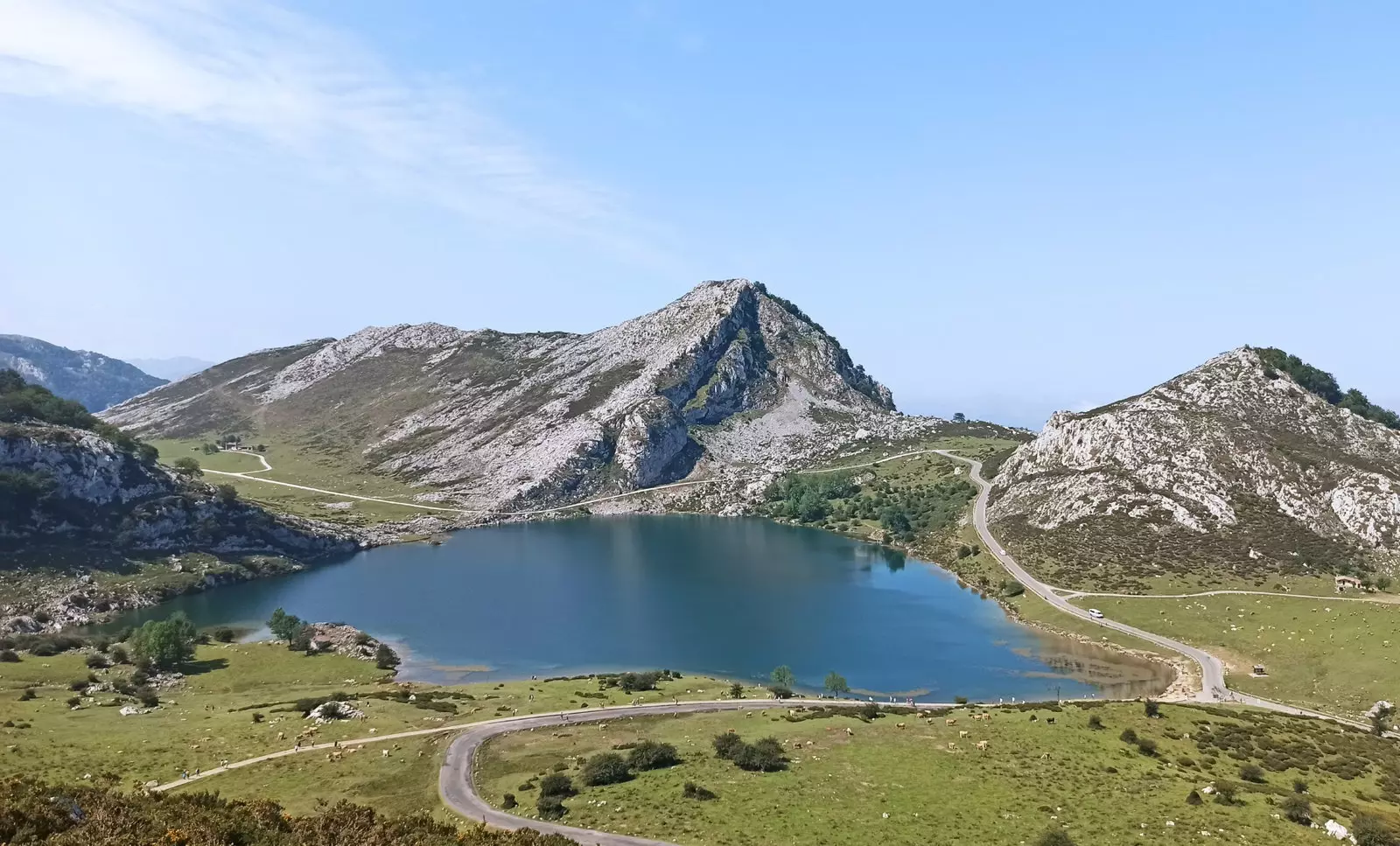
Lakes of Covadonga.
HOW TO GET
The reference point to arrive is Cangas de Onís, a town about 20 kilometers (35 minutes by car) to whose council the whole complex (lakes and sanctuary) belongs. The most common is to leave our vehicle in one of the four car parks that are available from there to the Sanctuary of Covadonga and ride one of the buses (9 euros) that run regularly from 9:00 a.m. to 7:30 p.m. There is also the option of taking a taxi.
If we want to go by car to the top, it is most likely that we will have to get up early, since in the hot months, long weekends and other special days You can only go up until 8:30 a.m. in the morning and go down from 8:00 p.m. In any case, it is best to check dates and times on their website.
We opted to leave the car in parking lot 2 (El Bosque) and go up by bus. Upon reaching the sanctuary, it is accessed by the C0-4, a winding mountain road of 12 kilometers plagued by closed curves and steep slopes where it is practically impossible not to come across cows, mountain goats and cyclists every few minutes who put their twins to the test. Trusting in the skill shown by the coach drivers, we enjoy from our seats the beauty that is presented before our eyes as greenery dominates the landscape.
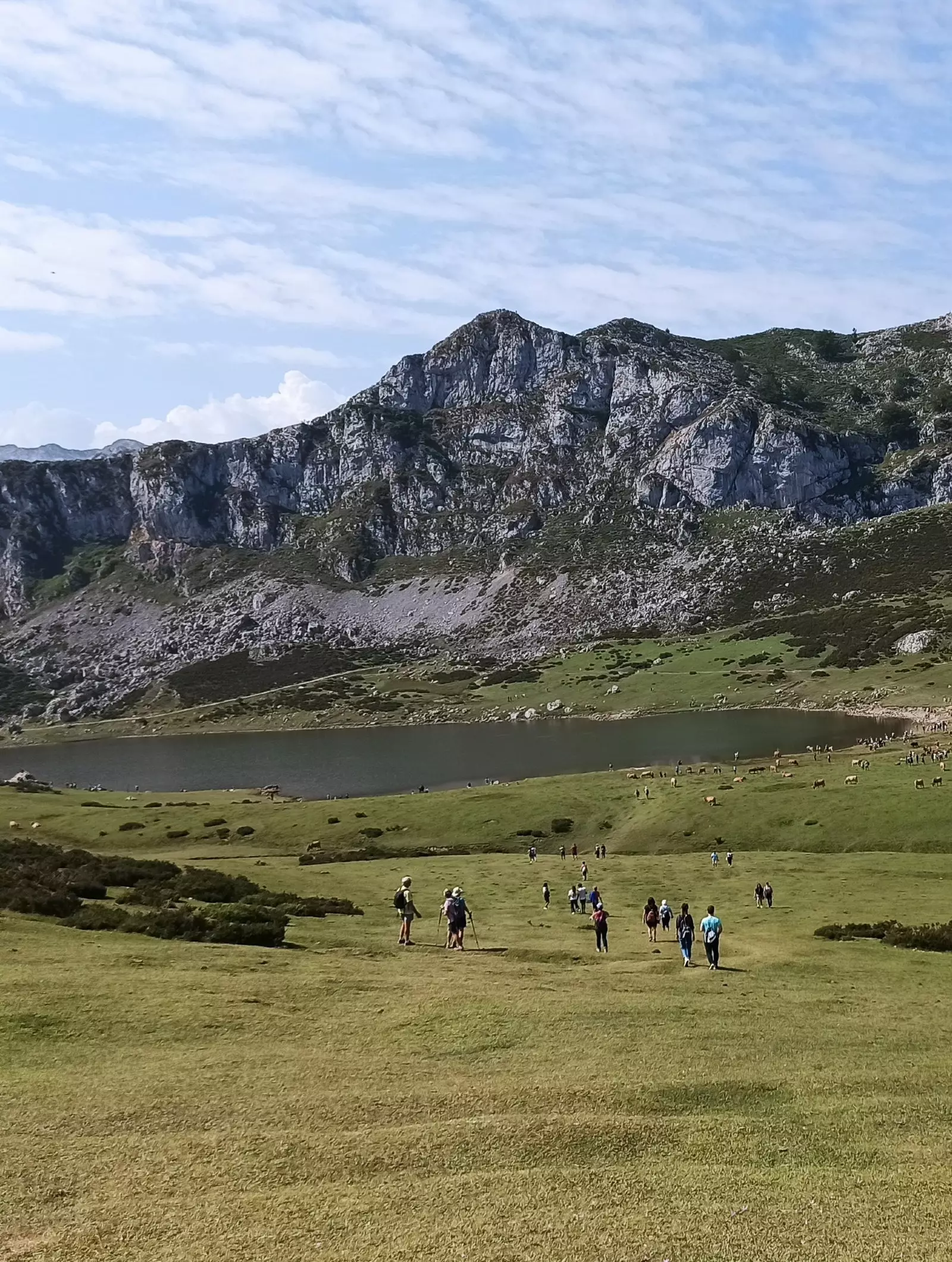
One of the circular routes.
THE ROUTES
The bus leaves us in the Buferrera car park, where we have a reception center for visitors to request information, as well as public toilets. From there start various hiking trails, being two the most frequented: Buferrera mines and circular route of the lakes. Both are circular, of little difficulty (suitable for the whole family) and approximately one hour long.
We opt for the second the classic walk signposted as PR-PNPE2. First, after passing through an exhibition hall with a drinking water fountain outside, It takes us to the viewpoint of the Prince. There we can admire the magnitude of the mountains where we are: the Cantabrian mountain range.
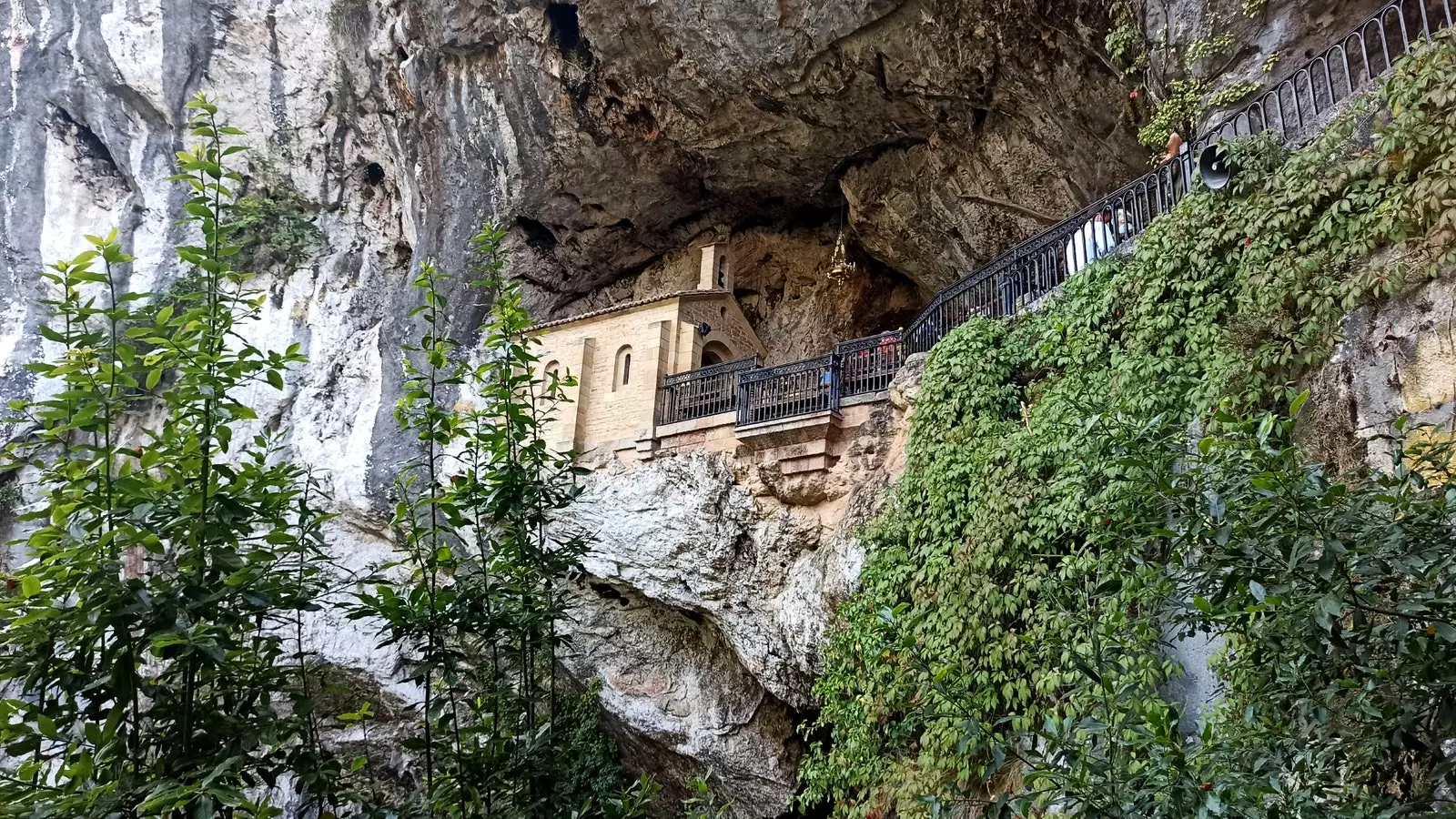
The Holy Cave of Covadonga.
IN THE SANCTUARY
We pass through the Buferrera mines and, after a short climb, we will have facing the panoramic view of Lake Ercina. A picture worthy of a postcard, with the reflection of the gray peaks in the water, surrounded by eternal green meadows where the cows graze freely. There we will also have a restaurant to eat, have lunch or have a drink. The route continues towards the Palomberu beech forest to border Lake Enol, taking us back to the starting point.
We got back on the bus to go down to the Sanctuary of Covadonga. We first look at La Cuevona, a cave adorned with a waterfall and a pond into which people throw coins to make your wishes. Although if what we want is to get married, we must enter the rocky corridor that runs on the left to drink from the source (untreated water). By the steep stairs we go up to the small temple where the Virgin of Covadonga (nicknamed Santina by Asturians). Supposedly there also lie (it is questioned by various historians) the remains of Don Pelayo, who died in Cangas de Onís in the year 737.
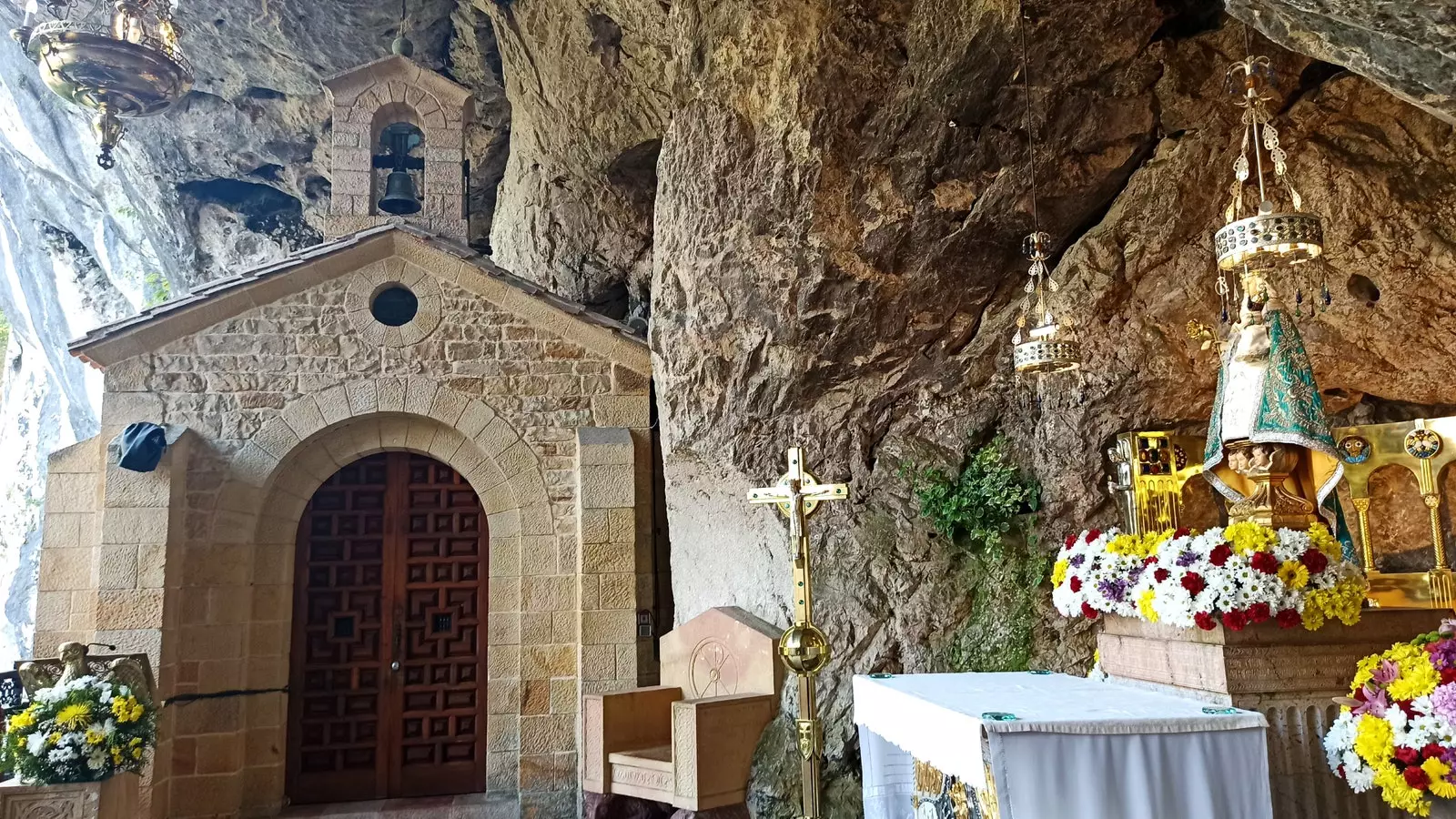
The Santine.
From there we cut through the corridor carved into the rock of Mount Auseva in the direction of the Basilica. Inaugurated on September 7, 1901, the pinkish tone of its limestone contrasts with the greenery in the background. Next to it stands the statue dedicated to Pelayo, as well as the Covadonga Museum, where paintings, photographs, engravings, goldsmith pieces and images are exhibited throughout ten sections.
In the sanctuary complex itself there are various restaurants with lounge and terrace. We, however, opted to take the bus back, get in the car and head to Cangas de Onís. There we eat on the terrace of the cider house Tires of Pelayo, whose menu (as in any restaurant in Asturias) will take our digestive capacity to the limit: anchovies and tuna salad, beans with clams, rice with baby squid, grilled bream, cachopo…
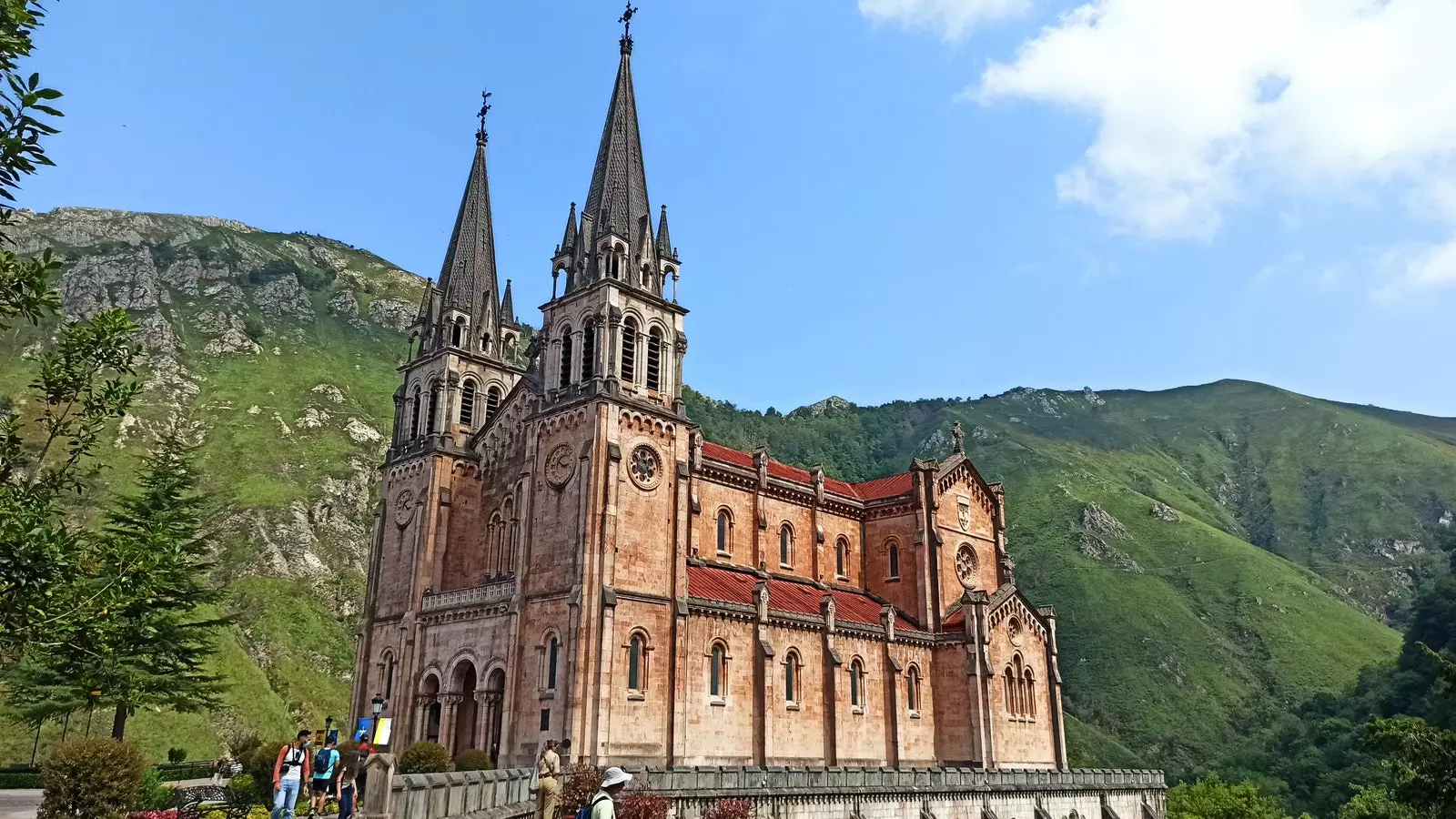
Basilica of Our Lady of Covadonga.
To lower such intake we walk through the streets of the town until we reach its famous bridge Roman, actually built in the Middle Ages. In the summer months the kids dart from its nooks and crannies to the waters of the Sella river (known for its popular canoe descent), testing his courage and his physical integrity. We rest on its shores before embarking on our return journey.
